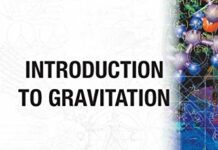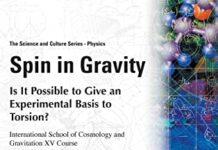
Ebook Info
- Published: 2006
- Number of pages: 184 pages
- Format: PDF
- File Size: 1.10 MB
- Authors: Venzo de Sabbata
Description
Bringing geometric algebra to the mainstream of physics pedagogy, Geometric Algebra and Applications to Physics not only presents geometric algebra as a discipline within mathematical physics, but the book also shows how geometric algebra can be applied to numerous fundamental problems in physics, especially in experimental situations. This reference begins with several chapters that present the mathematical fundamentals of geometric algebra. It introduces the essential features of postulates and their underlying framework; bivectors, multivectors, and their operators; spinor and Lorentz rotations; and Clifford algebra. The book also extends some of these topics into three dimensions. Subsequent chapters apply these fundamentals to various common physical scenarios. The authors show how Maxwell’s equations can be expressed and manipulated via space-time algebra and how geometric algebra reveals electromagnetic waves’ states of polarization. In addition, they connect geometric algebra and quantum theory, discussing the Dirac equation, wave functions, and fiber bundles. The final chapter focuses on the application of geometric algebra to problems of the quantization of gravity.By covering the powerful methodology of applying geometric algebra to all branches of physics, this book provides a pioneering text for undergraduate and graduate students as well as a useful reference for researchers in the field.
User’s Reviews
Reviews from Amazon users which were colected at the time this book was published on the website:
⭐This very short (160 pages) book is remarkable for both its clarity and comprehensiveness. The text covers many physics subjects (Lorentz transformations, electrodynamics, the Dirac equation, spinors, gravity) and thus quite lives up to the book’s title. The book also includes an historical overview of the founding of geometric algebra, which is quite interesting in its own right.Geometric algebra is not a form of advanced vector analysis or even a new mathematical formalism. Springing from the brilliant work of Grassmann, Hamilton and Clifford in the 1800s, geometric algebra was shown to be perhaps the most natural, fundamental and simplest way of doing vector analysis and calculus. But it got waylaid by the American mathematical physicist Josiah Willard Gibbs, who popularized what is now the traditional vector approach. Geometric algebra was largely forgotten until it was resurrected in the 1960s by the physicist David Hestenes. All this and the great advantages of geometric algebra over ordinary vector analysis are explained in detail in the book.The book has its faults, though they are mostly marginal — the text’s misspellings and occasional odd grammar are detracting but unimportant. My primary objection to the book is its highly speculative attempt in Chapter 10 to link a quantum theory of gravity to the notion of “torsion,” an idea that goes back 90 years to the failed work of Einstein and many others. But what the heck — authors de Sabbata and Datta are experts in the field, so perhaps they’re on to something after all.
⭐
⭐
⭐
Keywords
Free Download Geometric Algebra and Applications to Physics 1st Edition in PDF format
Geometric Algebra and Applications to Physics 1st Edition PDF Free Download
Download Geometric Algebra and Applications to Physics 1st Edition 2006 PDF Free
Geometric Algebra and Applications to Physics 1st Edition 2006 PDF Free Download
Download Geometric Algebra and Applications to Physics 1st Edition PDF
Free Download Ebook Geometric Algebra and Applications to Physics 1st Edition


